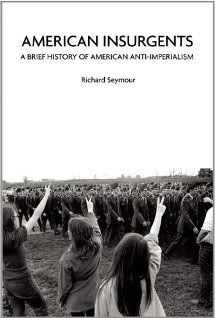Tuesday, September 27, 2005
Bringing Out the Dead. posted by Richard Seymour
The United States government doesn’t do body counts, but three well-publicised studies have attempted the task of accounting for those who have died, in various ways, as a result of the occupation. There has been the report for Johns Hopkins University, published in the Lancet, which measured excess deaths for the eighteen months from April 2003. There has been the ongoing media reports-based Iraq Body Count, which has recently released a dossier of civilian deaths from April 2003 until April 2005. And there was, recently a study conducted by the UNDP known as the Iraq Living Conditions Survey, which measured war-related deaths over a year from April 2003 until April 2004.Predictably, a number of impressions have been allowed to congeal around these reports which are either misleading or flatly false. I just want to take some time to illustrate some of the more obvious ones which accrued to the Lancet survey. A week after the findings were published suggesting 98,000 excess deaths had occurred as a result of the war, The Observer got round to discussing them. It claimed that “The report's authors admit it drew heavily on the rebel stronghold of Falluja, which has been plagued by fierce fighting. Strip out Falluja, as the study itself acknowledged, and the mortality rate is reduced dramatically”. Not only was this untrue, the precise opposite was true – Fallujah had precisely been excluded in order to arrive at the figure of 98,000. This was made clear in the précis included at the start for lay readers. It was, the authors said, a conservative estimate. Had the Fallujah sample been included, the survey's estimate would have been of an excess of about 298,000 deaths, with 200,000 concentrated in the 3% of Iraq around Fallujah. Another misconception was that the 8000-194000 confidence interval meant that there was an equal chance of the figure being 8000 or 194000. Fred Kaplan of Slate complained “This isn’t an estimate. It’s a dartboard”. I e-mailed the reports authors and got a reply from Les Roberts, pointing out that the confidence interval meant that the most likely figure was 98,000. Crooked Timber summarised: “the sample contains important information which is not summarised in the confidence interval, but which tells you that the central estimate is not likely to be a massive overestimate”. Another gambit was attempted by John Rentoul, Blair’s hagiographer, who really did try saying, inter an awful lot of alia, that the survey suffered from ‘recall bias’ – a possibility the authors had incorporated into their estimate. But the point of suggesting recall bias was to say that the pre-war estimates of mortality were lower than they might otherwise have been, thus creating a greater excess – unfortunately for him, that notion has been dealt a sharp death blow in ways that I will come to shortly. Rentoul also misconstrues the data in fundamental ways which you can read about by clicking on the link.
It was particularly crucial for many supporters of the war to dismiss these findings in some way, especially as many of them had invested much in the notion that casualties would be quite limited. Immediately after Saddam’s statue fell, apologists revelled in what they supposed was a swift and relatively bloodless war, thumbing their noses and giggling at critics who said the death tolls could be in the tens of thousands. And Lancet, when it appeared, said a curious thing – something that stuck in every warmonger’s throat: there was more risk of dying a violent death post-invasion than there was pre-invasion. The risk of dying a violent death was 58 times higher. What’s more, most violent deaths were a result of occupation violence. For shame! The entire philanthropic ‘humanitarian intervention’ enterprise was at stake. So, the red herrings were sent to water, and turned up in many august journals. As MediaLens illustrates, through conversation with various journalists and one of the report’s authors, the criticisms directed at the Lancet report’s methodology were rarely used against studies using the same method (for example, estimates of deaths in the Congo), were often ignorant, and tended to reflect government propaganda: “I find the methodology a bit doubtful” (Roger Alton, Observer); “while the sample may have been standard for that sort of thing - it seemed small from a lay perspective” (Mary Dejevsky, Independent); “So far as I am aware, the Lancet's report was criticised by the Foreign Office” (Terry Kirby, Independent); “as it turned out, Mr. Roberts used less-than-ideal methods and then overstated his results, possibly by a factor of two or three” (Washington Times); “I have a feeling (and I could be wrong) that the report may be a dud” (David Aaronovitch, highest bidder) etc etc. (Part two of MediaLens’ invaluable discussion is here).

Fallujah.
If the Lancet-deniers haven’t exactly been skilled in their handling of data, they have at least been resourceful in martialing a variety of superficially plausible reasons to dismiss the data: sample too small, estimate for pre-war mortalities too low, confidence interval too broad etc. Another immediate response was to big up the findings of Iraq Body Count. Rentoul did this, as did the government and a number of fawning commentators. Jack Straw puffed the IBC’s findings when interviewed on the Radio 4 ‘Today’ programme on 29th. IBC’s numbers were so much smaller and more friendly – a ‘mere’ 25,000 (present range 26092 – 29401). Iraq Body Count, for its part, said:
We are not a news organization ourselves and like everyone else can only base our information on what has been reported so far. What we are attempting to provide is a credible compilation of civilian deaths that have been reported by recognized sources. Our maximum therefore refers to reported deaths - which can only be a sample of true deaths unless one assumes that every civilian death has been reported. It is likely that many if not most civilian casualties will go unreported by the media. That is the sad nature of war. (Quick-FAQ)
The authors of the Lancet report made a similar point. But did the IBC’s findings actually conflict with those of the Lancet study? The Lancet measured ‘excess deaths’ – that is, it measured the approximate number of deaths that occurred post-invasion that would not have occurred had the invasion not taken place – it says: the occupation is this much more brutal than Saddam was in his last years. This happens to be a common method of studying deaths in war and under authoritarian regimes, and it certainly accounts for the bulk of deaths attributed to monsters like Stalin and Pol Pot – quite rightly, since deaths that result from state-ideological structures and its decisions, like starvation, disease, more accidental deaths through increased risk etc, are also avoidable ones. The IBC is more specialised: it counts only civilian deaths, and tries to account for as many of them as possible, while acknowledging the inherent under-reporting involved. When Lancet reports a total of 33,000 violent deaths, this doesn’t sound so far from the IBC total (at that time) of 25,000 exclusively civilian violent deaths. There seems no reason to imagine that the two reports are in fundamental conflict.
Most recently, a number of bloggers and newspaper columnists have extemporised on a report by the UNDP called the Iraq Living Conditions Survey 2004. It was reported in The Times as follows:
The 370-page report said that it was 95 per cent confident that the toll during the war and the first year of occupation was 24,000, but could have been between 18,000 and 29,000. About 12 per cent of those were under 18.
The figure is far lower than the 98,000 deaths estimated in The Lancet last October, which said that it had interviewed nearly 1,000 households. But it is far higher than other figures.
The UNDP’s report interviewed many more households and had a much narrower confidence interval, and reported a figure that – while quite large – was nevertheless much more in keeping with the expectations of many than those of the Lancet report. Where, the warbloggers wondered, was the widespread attention to this report? However, the surveys measure different things. And where the findings do overlap, as Tim Lambert notes, the findings of the UNDP, rather than conflicting with it, corroborate those of the Lancet:
The survey also had a question on war-related deaths that provides more support for the Lancet study on excess mortality. Question HM01 (questionnaire available here) was “Has any person(s) who was a regular household member died or gone missing during the past 24 months?” Question HM05 asked for the cause of death: Disease / Traffic Accident / War related death / Pregnancy or childbirth / Other. The resulting estimate for war-related deaths was 24,000 (95% CI 18,000-29,000, see page 54 of report). since the field work was carried in April 2004, this only counts deaths in the invasion and the following year. The corresponding number from the Lancet study is 33,000 (the rest of the excess deaths are from increases in disease, accidents and murders). When you allow for the fact that the Lancet study covered eighteen months rather than one year, the ILCS gives a slightly higher death rate. So an independent study has confirmed that part of the Lancet study.
It goes on to corroborate the Lancet’s findings on pre-war infant mortality, as I hinted at earlier:
Some of the critics of the Lancet study attacked it because the Lancet study found an infant mortality rate in the year before the war of 29 per 1000 births, arguing that was contradicted by a UNICEF estimate of 107 … The ILCS survey estimate for 2002 is 32. (See Figure 26.)
Let’s go back and take another look at the findings in the IBC’s new dossier. It reports that 24,865 civilians died in the first two years, 20% of them women and children, with the number twice as high in year two as in year one. Further, “US-led forces killed 37% of civilian victims”, while “Anti-occupation forces/insurgents killed 9% of civilian victims”. Over half of all civilian deaths resulted from explosive devices, 64% of which were caused by air strikes – and the resistance don’t have an air force. That corroborates another aspect of Lancet, which is not only that most of the excess deaths have been caused by violence, but that the bulk of the violent deaths were caused by the occupiers.
A few other notes, by way of illustrative anecdote. The US openly boasts of having killed 50,000 “insurgents”. If we were to take them at face value, then we would have to guess that the civilian death count was much higher. With replicas of Fallujah having appeared in Haditha, al-Qaim, Tal Afar, and now perhaps Sadr City as well, such would not be an unreasonable guess. If these were factored into a future survey, the number of deaths might prove to be extraordinarily high. Similarly, in an interview with Socialist Worker, one of the Lancet report’s authors refers to this study, which shows that 14% of army troops and 28% of Marines in Iraq believe themselves to have been directly responsible for the death of a non-combatant. That’s a lot of deaths, especially if you consider the near certainty that a large number of those who have killed non-combatants will not be aware of it, or will prefer to disavow it. And it only covers the period until July 2004.
The only story that obtains here is as follows: repeated attempts to discredit a major survey of excess deaths in Iraq have failed; tens of thousands of civilians have died as a direct result of violence; most of those died from occupation violence; tens of thousands more died due to the spread of disease and the collapse of the infrastructure; and every reliable study shows these same facts in some fashion, compelling the extraordinary and damning conclusion that the would-be liberators have made life agonisingly worse for Iraqis. And they wonder why Iraqis don’t like them? They wonder why there is a resistance?
Update: Well, it seems I was wrong. Upon a bit of further examination, it turns out that the US does do body counts, its just that they are suppressed. Oh well. And the Iraqi Ministry of Health was told by what was then the CPA to stop counting the dead as well. Just for the record, they were able to find 3,487 deaths during the invasion in 15 of 18 provinces before they were told to stop.
However, a number of other reports on deaths in Iraq have come to my attention, and I just thought I'd run through them by way of additional material.
There is the report by the People's Kifah, a civilian group against the occupation in Iraq, that estimated 37,000 civilian deaths in Iraq as of October 2003. This appears to have been carried out by a number of academics and activists across Iraq, in various provinces. Unfortunately, one of their workers were kidnapped by a Kurdish militia, and they don't know what happened to him.
There was the report of the Brookings Institute, which estimated between 15,200 and 31,400 violent deaths between May 2003 and September 2004.
And recently two further reports. First the Geneva-based Graduate Institute of International Studies estimates reappraised the Lancet statistics to conclude that 39,000 had died as a direct result of combat and armed violence. Second, the Iraqiyun Human Rights Organisation, estimates 128,000 deaths between March 2003 and July 2005. That figure comes from interviews with relatives of the dead and figures from Iraqi hospitals, and does not include abductions or assassinations.
This excellent article on Lancet is also worth a look.










